Jambo!! Your adventure begins!
If departing the US, you will need to leave on the 18th or 19th of June to be at Kilimanjaro Airport (JRO) near Arusha, Tanzania on 20 June. PLEASE double check your arrival day and time into JRO before booking. You might consider departing early to enjoy a “break-up” night or two in Europe or Istanbul! (Early arrival arrangements can be made in Arusha at a minimal cost)
OR
Arrive at Kilimanjaro International Airport (JRO). Transfer to Ilboru Safari Lodge (arrive between 7am and 5pm for included transfer; outside of these hours an additional transfer charge may apply. Optional early check-in if needed [subject to possible charge])
Enjoy time at the lodge and getting to know your fellow GlobalOkie Travel Safari travelers at the “Welcome Dinner”.
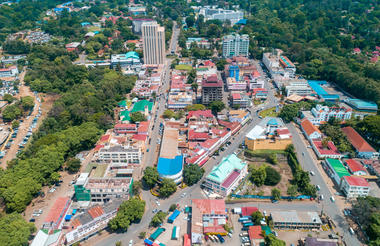
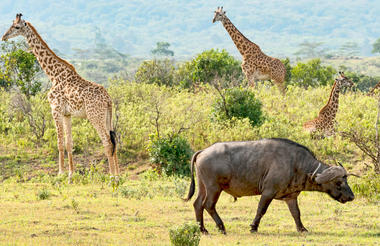
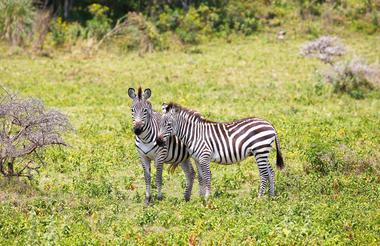
Depart the lodge in the morning and drive to Arusha National Park. Enjoy a walk with a Park Ranger followed by a game drive. After a visit to the National Park, on the drive back to Arusha we will stop at Tengeru Cultural Center for an amazing farm-to-table lunch and a farm tour.. This tour will lead you through Tengeru’s community coffee plantations where vast farms are found and visit a home where you can learn about the process of preparing coffee. At the end of the tour, you can sip a cup of delicious coffee that has been harvested by the Meru community on volcanic foothills of Mount Meru where vast farms are found. You can even buy a few bags of fresh coffee to take back home with you! Return to our lodge.. There will be a group of local dancers poolside this evening before dinner for you to enjoy – feel free to grab a favorite local beverage and sit back and relax!
(B, L, D)



After an early breakfast, we will heck out and drive to Tarangire National Park for full day game drive.
Tarangire National Park is one of my favorite parks in the Northern Circuit. It is ideally located some 118 km from Arusha and it is a haven for countless numbers of animals. The park itself is massive, at 2,850 square kilometers it is the sixth largest park in the country. Tarangire is one of the best places in the world to see large numbers of elephants, living and co-existing in their natural habitats. As other animals, they know that they can always find water in Tarangire regardless of how dry the season. Even if the Tarangire River is completely dry, the elephants still manage to dig through the sand to find water!
If it’s birds you are after, then Tarangire will not disappoint. With almost 550 species it is an ornithologist’s paradise. It is said that the swamps support the largest number of breeding birds anywhere in the world!
In terms of vegetation the park is truly a baobab garden. These giant ancient trees are not only a food, but also a water source, of which animals like elephants make full use.
Evening drive to Marera Valley Lodge for dinner and overnight
(B, L, D)
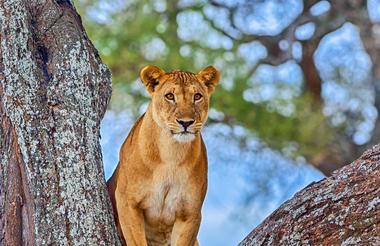

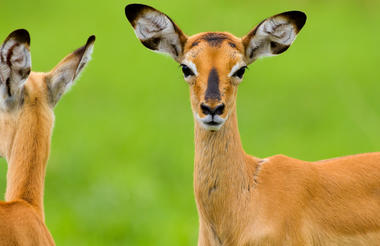
After an early breakfast, your guides will pick you up at 0600am and drive to Ngorongoro crater. We will cross over the caldera’s rim through a misty forest and descend 600 meters into the crater for a full day game drive. Supported by a year-round water supply and fodder, the Ngorongoro crater supports a vast variety of animals, which include herds of wildebeest, zebra, buffalo, eland, warthog, hippo, and giant African elephants. Another big draw to this picturesque place is its dense population of predators, which include lions, hyenas, jackals, cheetahs and the ever-elusive leopard, which sometimes requires a trained eye to spot. You will visit Lake Magadi, a large but shallow alkaline lake in the southwestern corner, which is one of the main features of the crater. It is home to a large number of flamingos, hippos and other water birds which can usually be seen here. In the late afternoon you ascend the crater and drive back to Karatu for dinner and overnight at Marera Valley Lodge
(B, L, D)

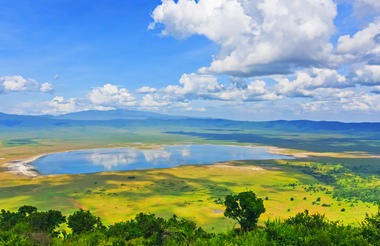

After an early breakfast, depart the lodge at 0630am and drive via the Ngorongoro Conservation Area towards Tanzania’s western plains. Leaving the highlands behind, you descend into the heart of wild Africa – the Serengeti National Park – with its endless plains, rolling into the distance as far as the eye can see. The Serengeti is one of the richest wildlife habitats in the world, featuring the Seronera River, which provides a valuable water source to this area and therefore attracts wildlife well representative of most of the Serengeti’s species. You will have game drive in the area until evening when you will drive to Tanzania Bush Camps Serengeti, arriving in time for hot shower and enjoy campfire before dinner and overnight
(B, L, D)

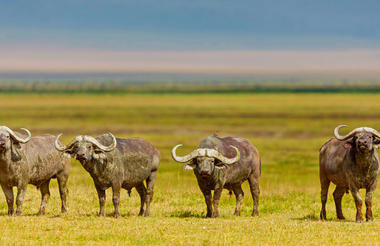
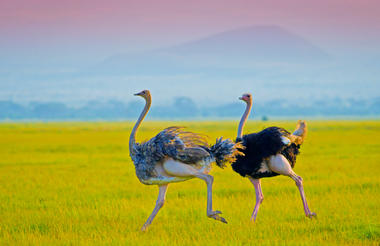
Spend a full day exploring the vast Serengeti plains.
This morning you can choose to take the optional hot air balloon ride over the Serengeti. This incredible, once-in-a-lifetime experience will afford you a bird’s eye view of the Serengeti landscape, where you may spot cheetahs, zebra, giraffes, hippos, elephants, and much more! After touching down, enjoy a full British bush breakfast with fresh fruit, eggs, pastries, coffee/tea, and juice. Don’t worry – there’s a “loo with a view” for your comfort! Following brunch, you will meet up with the other group members and enjoy a game drive. (Additional charge; weather dependent)
Those not rising above the African plains in a balloon will rise early to enjoy an early morning game drive. At dawn, at camp or on a drive, you may encounter animals grazing in the beautiful light of sunrise and predators may still be busy hunting before retiring to rest for the day. Sunrise on the Serengeti is not to be missed, and extraordinary photographic opportunities will abound at this magical time of day. You may return to your accommodation for a hot lunch or to opt for a packed lunch which can be enjoyed at one of the various picnic sites found in the Serengeti. After lunch, you will continue your game drive. Around the time of dusk be on the lookout for lion.
Cheetah can also be spotted on the plains in the early morning and late afternoon when temperatures are not too high. They rely on daylight and speed to catch their prey. Hippos can be seen in the bigger pools and rivers while crocodiles can be seen sunning themselves on the riverbanks. You will return to camp in time to enjoy a sundowner before your evening meal. Dinner and overnight at Tanzania Bush Camps
(B, L, D)
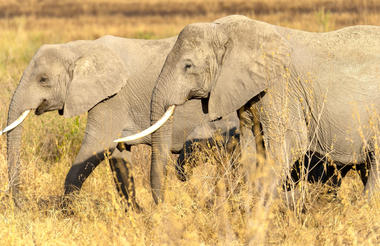
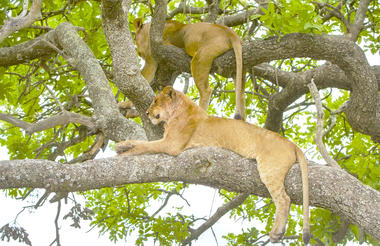
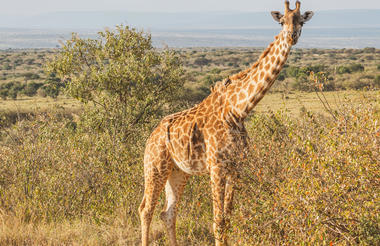
Central Serengeti
The Central Serengeti, lying at the heart of this spectacular national park, is the most popular region in the reserve for its abundant wildlife, large numbers of big cats and quintessential Serengeti landscapes of acacia-studded savanna. Resident wildlife makes this part of the Serengeti a fantastic year-round destination, but the months of April to June and October to December, when the herds of the Great Migration pass through the area, are when it’s at its peak.
The Seronera River Valley, located in the south-central region of the park, is one of the most popular areas in the entire reserve. Known as the Big Cat Capital of Africa, the Seronera is rich in lion, leopard and cheetah – and people often spot all three in one day of game drives. Look for leopard around the Seronera River, which is home to one of Africa’s densest populations of the big cats, while lions can often be seen on the kopjes (rocky outcrops). The Serengeti Plains – the open savanna south of the Seronera River – are prime cheetah territory. Other animals to spot in the area’s varied habitats of rivers, swamps, kopjes and grasslands include elephant, hippos and crocodiles in the rivers, buffaloes, impala, topi, jackals and bat-eared foxes.
While the year-round supply of water from the Seronera River means that the area is excellent for wildlife spotting throughout the year, April to June is the peak season for game viewing in the Seronera, as this is when the plains are full of migrating wildebeest, zebra and gazelle as they’re making their way up north. The central location of the Seronera means that it’s one of the best places to see the Great Migration in action, as the animals are moving through the area for months.
Highlights
The Central Serengeti is a fantastic area to see the Great Migration in action: the herds move through this section of the park from April to June as they travel northwards, and then they come back again heading south from October to December. Some of the best locations in the Central Serengeti to see the herds include the Seronera Valley and Seronera River, Moru Kopjes, Simba Kopje and Maasai Kopjes.
If you’re after Big Cats, the Seronera area in the Central Serengeti is your best bet: this region is hailed as the best place to see predators – particularly lion, leopard and cheetah – on thrilling hunts.
The Central Serengeti is studded with many rocky granite outcrops, known as kopjes, which are where you should look out for lions and cheetahs. There are also some particular kopje highlights, such the Simba Kopje, or Simba Rocks – the place that inspired Pride Rock in the Disney film The Lion King. The film link is not the only reason to visit this pile of granite boulders however – it’s great spot to see lions, which are often lying on the rocks under the sun. At Moru Kopjes, south of the Seronera River, you can try and search for some of the last remaining black rhinos in the entire reserve – as well as see some old rock art paintings. Then there’s a visitor’s centre for the Serengeti Rhino Project, where you can learn about the important rhino conservation work that’s being done to protect this highly endangered species. Moru Kopjes is also one of the very few areas of the park where you can do multi-day walking safaris.
Hot air ballooning is a must-do when you’re visiting the Serengeti. Floating gently above the grassy plains in the golden light of dawn, spotting animals from your suspended basket is an experience you’ll never forget. If you’re staying in the Central Serengeti, you can get a transfer to and from your lodge or camp to the hot air ballooning launch site near the Masai Kopjes. A champagne breakfast once you land is the cherry on top of an amazing activity.
After breakfast, weather and roads permitting, we will leave early and drive to the western Serengeti in hopes of crossing paths with the Great Wildebeest Migration. You will have game drive enroute. Late evening drive to Tanzania Bush Camps Central Serengeti for dinner and overnight
(B, L, D)
Western Corridor
The Western Corridor, or Serengeti west, ìs a stretch of land following the course of the Grumeti River from Serengeti Central for about 100 kilometers out towards Lake Victoria.
A pair of rivers, the Grumeti River and Mbalageti River, is the dominant geographic feature of the Western Corridor. These rivers run more or less parallel in a westerly direction, about 20 kilometers apart from each other.
Both the Grumeti and Mbalageti rivers support substantial chunks of riverine forests before emptying into Lake Victoria. Also, a few minor mountain ranges are found in the area. The Western Corridor is an aesthetically pleasing portion of the park and supports a sizeable spectrum of resident wildlife throughout the year.
The busiest period in terms of visitors is the May-July period which coincides with the Great Migration passing through the Western Corridor on their trek to the north. While the crossing of the Grumeti River may be lesser known compared to its northern counterpart, the crossing of the Mara River, but offers sightings just as exhilarating with the added benefit of fewer fellow visitors at the crossings. The Grumeti River is the first enormous obstacle for the herds to tackle.
The narrow stretch of land comprising the Western Corridor is flatter than the more northerly parts of Serengeti National Park. It is moister and more densely vegetated than the southern plains. The characteristic vegetation of the Western Corridor is park like woodland, dotted with areas of open grassland and dense stands of the whistling thorn (Vachellia drepanolobium).
Wildlife viewing in the Western Corridor is consistent throughout the year. The broken savannah south of the Grumeti River supports substantial resident populations of giraffe, wildebeest, elephant, zebra and other typical plains animals, and lion. The little-visited open grasslands north of the river are good for cheetahs.
Late evening drive back to Tanzania Bush Camps Central Serengeti for dinner and overnight



About The Serengeti National Park and The Great Migration
The great Migration of the Serengeti is considered one of 'The Ten Wonders of The Natural World’, and one of the best events in Tanzania to witness. A truly awe-inspiring spectacle of life in an expansive ecosystem ruled by rainfall and the urge for survival amongst the herbivores of the Serengeti plains.
The humble leader of the migration is the Wildebeest, known to be lacking in intelligence, earning it the affectionate moniker ‘clown of the plains’. In its defense, the Wildebeest is a successful team player and as a gregarious herbivore it reaches up to 1.5 million in numbers as part of the migration. Its intelligence and ability to survive in such a harsh environment as the East African bush lies in its strength in numbers - a super-herd in the seemingly never-ending circle of life of the Serengeti.
Accompanied by 200,000 zebra, 350,000 gazelles and 12,000 eland this strange wonder of the natural world circulates the Serengeti National Park in Tanzania and the Maasai Mara Game Reserve in Kenya, its path dictated by rainfall and the resulting growth of grasses on the plains. There is neither a start nor finish to their journey; merely a relentless sequence of life and death. The only beginning is the moment of birth and the only ending is death - which can come only too easily in the migration.
The precise timing of the migration is entirely dependent upon the rainfall patterns each year. Nor is it confined to the un-fenced National Park, and instead seamlessly flows into the surrounding Game Reserves.
Between January and March the Ngorongoro Conservation Area and Maswa Game Reserve, south-east of the Serengeti offer refuge during what is the short dry season thanks to its numerous rivers and spring grasses, allowing an opportunity for the Wildebeest to rest and give birth. Up to 400,000 calves are born in a synchronized birthing within just two to three weeks of one another! Unsurprisingly, this period presents a 7 veritable feast for any accompanying predators - and the first challenge in the wildebeest’s life - with hundreds of hyenas and lions scattered across this area taking their chances with a potential glut of vulnerable newborns.
By April the Wildebeest begin their journey, moving in en-mass, head to tail, northwards into the National Park and passing through the popular central area of the park at Seronera. This is also the time of the annual rut, and start of the gestation period (eight and a half months) of the next year’s calves.
In May the Rainy season arrives and brings heavy precipitation to the west of the park. Shortly after this the fertile plains bear a heavy cover of grass drawing the migration westward towards it. The Western Corridor including the Grumeti Game Reserve and Ikorongo Game Reserve host the majority of the migration through June, offering the Game a chance to build up their strength for the journey ahead.
From here the migration heads north again, through the park and towards the Kenyan border where it will arrive by July. It is from this point that the migration takes on one of its most spectacular and deadly advances: - the river crossings; in the Serengeti the Mbalageti and Grumeti rivers, and in Kenya, the most famous crossing; the Mara river. For most of the year these rivers are relatively placid and often dry, but come the rains they become violent torrents presenting major obstacles to the progress of the wildebeest.
The migration arrives at the Mara River in their tens of thousands and gather, waiting to cross. The result has been shown around the world on numerous nature documentaries and is truly awesome show of the deadly reality this migration faces. Many adults and calves are lost to crocodile and lion attacks, drowned or crushed by the herd and calves regularly become separated from their mothers on the wrong side of the river, resulting in 8 little hope for their survival. While such a tragic hurdle in the migration may appear to be a disaster for the wildebeest, the deaths only represent a mere handful of the hundreds of thousands of calves born each year.
Without a degree of natural mortality, the wildebeest population could spiral out of control and totally change the balance of this expansive ecosystem in which they perform a lead role. Once reaching the grasslands of the Maasai Mara in August, the wildebeest spend several months feeding and fattening once more, taking advantage of the scattered distribution of green pastures and isolated rainstorms.
Continuously they will seek areas of good grazing in the Mara, enabled by their evolved ability to travel large distances very quickly and economically. By late October, the first of the short rains fall on the scrawny grass plains to the south of the Serengeti, filling seasonal waterholes and bringing fresh growths of grass. The wildebeest will instinctively start heading south again, trekking down through the eastern woodlands and back into the Ngorongoro Conservation Area. The Wildebeest scatter and spread out again once they reach the open plains having completed a journey of over 500 miles. With 90 per cent of the cows heavy with the new season’s young the journey is ready to start once again with the birth of the next generation of calves.
For any visitor to the Serengeti, the wildlife spectacle of the migration offers a huge enhancement to what is already an overwhelming sight. Many of the lodges and safari camps are located in great positions for the arrival of the migration in their area and throughout the park numerous luxury mobile camps pop-up in time for the arrival of the herd.
Other than during the August to October period when the migration is in Kenya, Tanzania is the place to be for this natural wonder. And should you be unable to visit the location of the migration during your visit, don’t worry, life still goes on throughout the park, with smaller groups of wildebeest, zebra and gazelles remaining resident in the more fertile areas of the park throughout the year; the lazy or the clever ones? We’ll let you decide!
After breakfast, check out from the lodge for your last game drive in the Serengeti enroute to Karatu via the Ngorongoro Conservation Area. We will stop for a visit to a Maasai Village, where we will enjoy Masaai dancing (feel free to join in!), a village tour and Q&A, and of course an opportunity to purchase handmade craft goods. After our visit, we will drive to Karatu for dinner and overnight at Ngorongoro Coffee Lodge.
(B, L, D)



Today will offer a final time for shopping on our transfer back to Arusha or the airport for your flight home!
(B)




